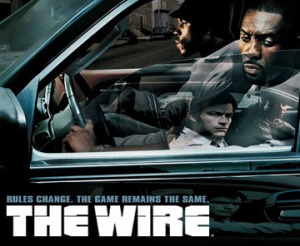I kicked off the evening’s proceedings for pub philosophy group Big Ideas last night. The session was entitled “Is Rhetoric a dirty word?”
Rhetoric is a subject that public relations has tried to grab for itself. Like bonnets, black death and morris-dancing, Rhetoric is one of those items that finds itself discarded by time. My adopted profession, and the subject I teach – PR – doesn’t really have any specialist areas of its own. It was one of the things that originally drew me to teaching the discipline – the way that it raids marketing, psychology, sociology, corporate strategy, business, design, English, and Cultural & Critical Studies for deeper reflection. But I soon found that even Rhetoric had been embraced by other disciplines, such as linguists and postmodern philosophers. Perhaps Rhetoric could be about to shed its ‘discarded’ label, and do a ‘ballroom’ rather than a ‘morris’ dancing. That was my argument – that Rhetoric should be among the mainstream ‘Saturday night TV’ of communication tools. Let me explain.

Are parts of inner city UK really comparable to episodes of The Wire? Good or bad rhetoric?
Like anything else, Rhetoric can be done badly as much as it can be done well. We only usually ‘finger’ it when it is done badly – cue Shadow Home Secretary Chris Grayling‘s recent comparison of parts of inner city UK with episodes of The Wire, for example. Or Gordon Brown‘s shocking performance on YouTube.
Done well, Rhetoric can be the substance as well as the word or deed. Done well, it is as if it is instinctive, when you learn to dance or ride a bike. Done badly, it is like Manuel in Fawlty Towers: “I learn it from a book.” As Bill Clinton described it in a recent BBC documentary, there is a written speech, and then there is the moment it is delivered too. It is like a jazz piece. It is about how you play it too. Equally, you should never hog the stage, showing off for showing off’s sake, or in the case of a dancer, your steps eclipsing those of your dance partner.
Most people begin their criticism of Rhetoric from the father of the subject, Aristotle‘s definition of it as “the art of using language to persuade.” In terms of plumbing, that is a technical skill which embraces patterns of language, structures of argumentation, and tugs at our emotions. It also taps into the personalities of the communicator and the audience.
Equally though, he called it “the art of discourse”, suggesting this is something that is two-way, something more organic. Not necessarily just for show. This links it in with two-way symmetrical models of excellence in communication championed in public relations theory.
For those new to the concept, Rhetoric was born in ancient Greece during the birth pangs of democracy. The three main concepts to rhetoric are Ethos, Logos and Pathos. They are three pedals that one could play to a greater or lesser extent, depending on the communication challenge. Ethos is the character of the speaker (do you trust them?); Logos is the nature of the message (does it add up? is there expertise?); and Pathos is the emotional response generated in the audience (the dynamism and warmth of the performance). There is a fourth, lesser highlighted concept of Kairos – the moment, the timeliness of the communication. I particularly like this concept, as it allows for the individual contribution of the communicator and what might commonly be called ‘nous’.

Pauline - 'do I look like Deirdre Rachid?'

Deirdre Barlow, nee Rachid
A number of alternative definitions from the 20th century show up just how far away from the jibes our understanding of Rhetoric should be. (all collected by Booth, W.C. (2008) The Rhetoric of Rhetoric: The Quest for Effective Communication, Oxford: Blackwell Publishing, pg. 7-8)
Rhetoric is:-
“the study of misunderstandings and their remedies.” I.A. Richards (1936)
“that which creates an informed appetite for the good.” R. Weaver (1948)
“is rooted in an essential function of language itself, a function that is wholly realistic and continually born anew: the use of language as a symbolic means of inducing cooperation in beings that by nature respond to symbols.” K. Burke (1950)
“We should not neglect rhetoric’s importance, as if it were simply a formal superstructure or technique exterior to the essential activity. Rhetoric is something decisive in society…. There are no politics, there is no society without rhetoric, without the force of rhetoric.” J. Derrida (1990)
And this bring us to the centre of my case for celebrating rhetoric, thanks to the excellent book by Bryan Garsten (2006), Saving Persuasion: A Defense of Rhetoric and Judgment, Cambridge: Harvard University Press.
First, rhetoric is not about ‘show’ or performance. It is just as much about creating the conditions for a ‘call to arms’ to invite us to make a judgement.
Pushing an audience to the point of making a judgement, particularly with politicians is quite a novelty these days. Surely sticking one’s neck out is a good thing, to be applauded. The enemy of good rhetoric is usually more establishment forces, dismissing such activity as ’empty’, and defining itself as the ‘public good’.
Second, rhetoric has a role in encouraging deliberation. My life has been typified for many years by so many daily ‘pins in the eyes’ moments, created by standardised rules enforced by faceless bureaucracies; technocratic or functional decision-making which seems to lack a heart, and a lack of autonomy for anyone even a significant way up the career food chain. It means communicator and audience lack interest. Heads aren’t turned. Responsibility isn’t taken.
Rhetoric can be used to draw people into the process of deliberation, making them more attentive, and giving them more of a stake in the eventual outcome of the process. Cue Obama’s “Yes We Can” campaign. Again, for the most part, we only ever get told about the bad examples, because we don’t embrace rhetoric. These include cack-handed, or cliche ridden consultations. Indeed, most attacks on Rhetoric are doing what they accuse Rhetoric of.
Thirdly, by provoking a reaction, or a ‘swash’ if you will, Rhetoric disturbs, and as a result is great for creating space for reflection. It is often mistakenly assumed that silence is an essential requirement for reflection, when sometimes we require the opposite, which can be provided through the passion Rhetoric stirs.
In my talk, I was charged with deliberately provoking argument, and so suggested that Rhetoric be reintroduced to the school curriculum. Until a couple of centuries ago, it was part of the ‘trivium’ with Logic and Grammar and was a central part of the school curriculum across Europe. Interestingly, I found some agreement for my cause, particularly because it would give children a reason for studying many of the devices they learn in English Language. With Rhetoric, they would now have a reason for using them in ‘performance’ in daily life – whether participating in political debates, holding those in power to account, challenging line managers, shoddy service, getting off with someone, cutting a good deal on Tottenham Court Road, or at a job interview.
One of the devices I most use (or over-use) is humour, and the particular device of antithesis. There is a character in the BBC comedy League of Gentlemen who works in the Job Centre called Pauline (pictured above). To one exchange to an unruly workshop, she replies rehtorically, “Do I look like Deirdre Rachid?” Here she is trying to make a point by trying to compare herself with a character from the popular ITV soap Coronation Street who she thinks she is the exact opposite of in terms of looks. That is antithesis. It’s just made more funny in this case because she DOES look like Deirdre Rachid (also pictured above) – so this is a slightly different case.
For a full list and examples of the kind of devices that rhetoric embraces, one of the best books is Cockcroft, R. & Cockcroft S. (2005) Persuading People: An Introduction to Rhetoric, Basingstoke: Palgrave Macmillan. (Chapter 7 and Appendices)

Shirley Williams

Malcolm Wicks
I attempted to illustrate my case with some example of practitioners of the art of rhetoric. Who has ‘got it’? In politics, obviously, Bill Clinton. I think Shirley Williams too. In an understated way, I have always admired Malcolm Wicks MP for the way he always manages to engage me, even though I usually disagree with the policy he is articulating. Somebody in the pub audience rightly suggested John Reid, somebody who I think is particularly skilled. One of my original heroes, David Penhaligon (who died in a car crash in the mid 1980s) was so particularly gifted that I’m starting to see conspiracy theories in his death in order to prevent the first Liberal Prime Minster since Lloyd George! Outside of politics, suggestions included Len Goodman, Sir Bobby Robson, and of course, my granddad Frank Holland. Alix Salmond and the SNP were held up by me, not in terms of their programme, but their Rhetoric. By being prepared to invite voters to make a judgement, they had transformed their electoral fortunes.

John Bercow

Stuart Hall
In terms of not so good, new speaker John Bercow was suggested as someone who was too interested in the technical aspects of rhetoric (too frilly in the cuffs, as I would say). Barack Obama had it on the campaign trail, but it has not transferred so well into office. There was some discussion of just how much bigger a politician Gordon Brown would be than Tony Blair, if only he had half of Blair’s rhetorical skills. Stuart Hall was held up as somebody who once had it, but somehow only seemed to eat, sleep and breath Rhetoric, which left him appearing a little, well…….
I think one of rhetoric’s main uses is a kind of personal log-book; a way for us all to seize the controls more efficiently of our communication abilities. To be more human. It doesn’t mean rejecting more scientifically grounded theories of persuasion. Rhetoric could just be an easier way of the individual operating by them.
I love Rhetoric, and think we all have something to gain by deploying it. Equally, if I’m the only person who sees its good side, that’s as good, because I will find it even easier to prosper through using it. I first discovered it after finding that it gave a name to many of the little things that I had been doing professionally for a number of years to good effect, but that weren’t in any training course or textbook. I cannot understand why more people aren’t benefiting from using it. Let it roll!
And if you fancy a brawl over a philosophical problem together with a pint, upstairs in pub every month, I can heartily recommend Big Ideas. It worked for me, and I will certainly be returning to join in the other end of an argument.

Hmm… I haven’t come across the idea of Kairos (moment / timeliness of communication). For those interested in digital advertising and the real-time nature of feedback/advertising this is a useful expression and concept. I agree that rhetoric should be more central to curricula on Communications. It makes a much needed addition to formal analysis that has more to do with dissecting dead bodies than dealing with lived communication.
Good blog-post worthy of cake 😉